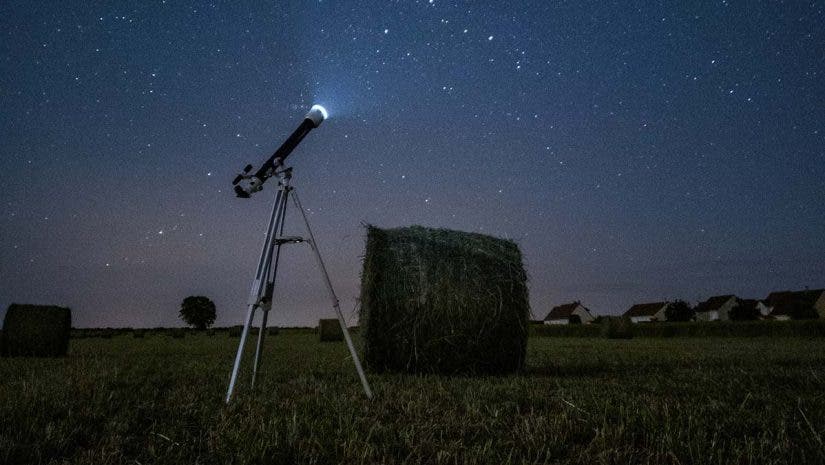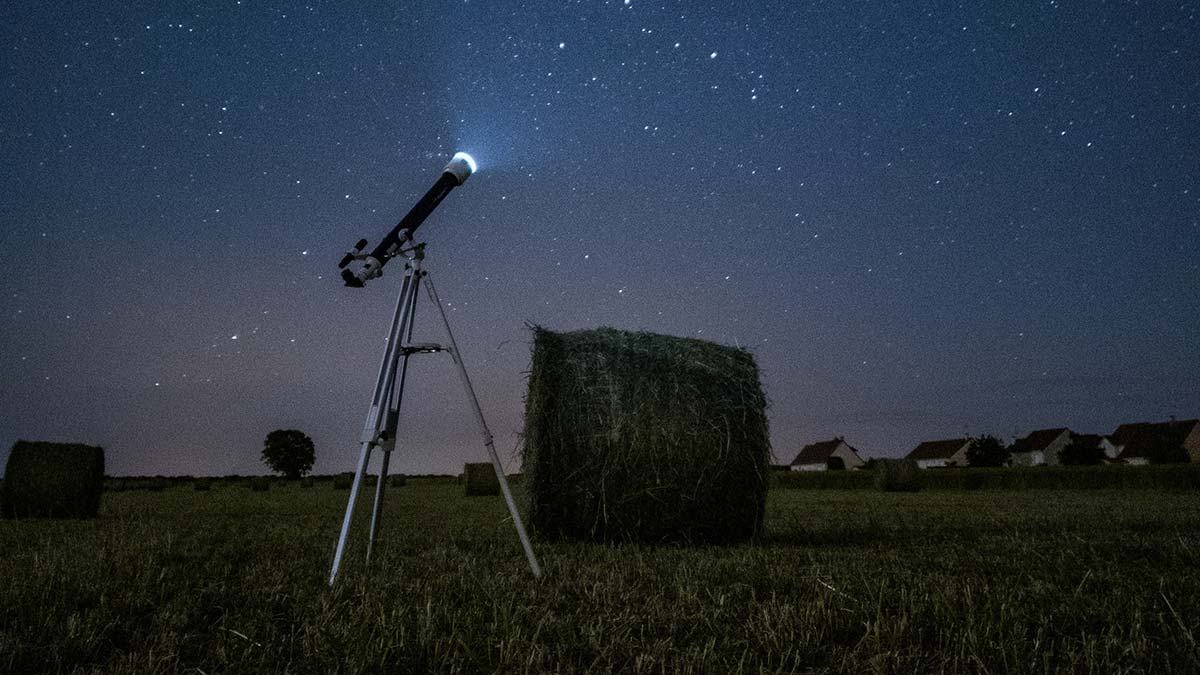When it comes to exploring the night sky through a telescope, few things are more rewarding than viewing planets. Because they’re located right in our own solar system, planets are much closer than most other celestial objects. Therefore, it’s possible, even for beginners, to view them in great detail. Thanks to exciting technology and reasonable affordability, amateur astronomy and planetary viewing have never been more accessible. If you’re interested in viewing planets, here are the best telescopes for viewing planets on the market.
What to Look for When Buying a Telescope to View Planets
There are quite a few types of telescopes available, and it’s important to select one with all the features you need for your preferred type of viewing.
For example, many sky watchers find refractors to be the best type of telescope for viewing planets, while stargazers who prefer to view deep sky nebulae often choose reflector telescopes.
No matter which type of telescope you choose, make sure it fulfills a few key requirements to ensure the best planetary viewing. You’ll need to pay close attention to aperture size, focal length, and mount type to find the ideal telescope for planet gazing.
Aperture Size
Aperture size is an important factor when you’re choosing a telescope. The larger the aperture, the more light enters, so you can see distant and dim planetary objects more clearly.
If you’re shopping for a refracting telescope, the aperture measurement will indicate the diameter of the objective lens. Ideally, your telescope should have a minimum aperture of 90mm for improved visibility and clarity.
A larger aperture maps to much better resolution so you can visually distinguish between a planet and objects near it like its moons or rings.
Remember that aperture size is only one part of the equation. Focal ratio is the next important factor.
Focal Ratio
Focal ratio relates to the size of your field of view and the level of magnification. To find the focal ratio of a telescope, you need to divide the focal length by the objective diameter.
If viewing planets is your primary goal, it helps to have a focal ratio of f/10 or greater. Stargazers searching for nebulae need a smaller focal ratio of f/7 or less because they need a wider field of view.
The focal length of a telescope determines the magnification of the planetary objects and their features. If you want to see craters on the Earth’s moon in great detail, for instance, you’ll need a 2000mm or greater focal length.
Telescope Mount
You can spend plenty of money on a high-end telescope, but unless you choose the right telescope mount, you won’t be happy with your viewing sessions. Do you want to reduce vibration, move smoothly between viewpoints, and maintain a firm lock on celestial objects? Then you’ll need an ultra-sturdy, high-quality mount.
There are two main options you’ll encounter when shopping for a telescope mount: equatorial mounts and altazimuth mounts. Altazimuth mounts offer two directions of movement (altitude and azimuth) while equatorial mounts take the rotation of the earth into consideration so planets don’t drift out of your field of view.
If you’re interested in astrophotography, it’s best to use an equatorial mount.
Best Telescopes for Viewing Planets
1. Celestron StarSense Explorer DX 102AZ Smartphone App-Enabled Refractor Telescope
The Starsense Explorer DX is the perfect beginner telescope for planetary viewing.
The easy-to-use smartphone adapter dock and integrated app helps this high-quality telescope function like more complex computerized models at a significantly lower price. The app will guide you through a list of currently visible celestial objects so you can start stargazing and viewing planets like Saturn, Jupiter, and Venus right away.
Thanks to a four-inch aperture size and a long focal length of 660mm, you can explore plenty of exciting celestial objects like star clusters and nebulae, even in urban locations with light pollution.
Key Specs
- Optical Design: Refractor telescope
- Aperture: 102mm (4.01”)
- Focal Length: 660mm (25.98”)
- Focal Ratio: f/6.5
- Eyepieces: 25mm eyepiece and 10mm eyepiece
- Optical Coatings: Fully XLT coated glass optics
- Finderscope: StarPointer Red Dot finderscope
- Aluminum optical tube
- Altazimuth mount
- Patent Pending StarSense Sky Recognition Technology and integrated smartphone compatibility
What We Like About This Telescope
The Celestron StarSense Explorer DX 102AZ is an excellent first telescope for space enthusiasts who want to observe a wide variety of celestial objects. Simple smartphone integration makes it easy to determine what you’re looking at while you’re exploring the night sky.
Instead of using your phone’s internal gyroscope, the StarSense app docks directly with your telescope, so the location calibration is impressively accurate. With an affordable price point, this is a robust telescope for new stargazers.
2. Explore Scientific Refractor Telescope
This Explore Scientific Refractor Telescope is in a league of its own. Designed for seamless integration with smartphones for astrophotography, this telescope features a large aperture of four inches, a wide field of view, a deluxe, two-speed Crayford-style precision focuser, and an impressive 714mm-long focal length.
Enhanced multi-layer deposition coatings and quality optics eliminate light scatter and maintain contrast for a clear view. This means you can explore the night sky in breathtaking detail. Planetary viewing feels simple and exciting with this fantastic refracting telescope.
Key Specs
- Optical Design:Air-spaced Triplet EDApochromatic refractor with HOYA dense fluor crown, FCD1 ED glass
- Aperture: 102mm
- Focal Length: 714mm
- Focal Ratio: f/7
- Focuser: 2”
- Ten-to-one dual-speed Crayford-style, with adjustable tension and lock with two draw tube extensions
- Optical Coatings: EMD (enhanced multilayer deposition) coatings
- Finderscope: StarPointer Red Dot finderscope
- Aluminum optical tube
What We Like About This Telescope
For home astronomers and astrophotographers, this impressive telescope is hard to beat. It’s a significant upgrade from introductory telescopes, and it offers plenty of features and robust build design, so you can watch the stars with a smooth, enjoyable experience.
If you’re interested in astrophotography, optical quality is one of the most important specifications to consider. Even the smallest chromatic aberration can ruin an image. Thanks to the ED102’s air-spaced triplet optical design and the HOYA ED glass, you can count on pristine image clarity.
3. Celestron StarSense Explorer DX 130AZ Reflector Telescope
The five-inch aperture found on the StarSense Explorer will impress all amateur astronomers. The larger aperture makes clear viewing of objects like Jupiter’s moons and Saturn’s rings easier than ever. Meanwhile the 650mm focal length offers high magnification for extreme detail when viewing objects in the night sky.
Not only does this kit include the Newtonian reflector optical tube, but you’ll also receive 25mm and 10mm Kellner eyepieces, the smartphone dock, a red-dot finderscope, an alt-azimuth mount with a slow motion control rod, and a full-height tripod. With so many great features and accessories, this versatile telescope is hard to beat!
Key Specs
- Optical Design: Newtonian reflector telescope
- Aperture: 130mm (5.11”)
- Focal Length: 650mm (25.59”)
- Focal Ratio: f/5
- Eyepieces: 25mm eyepiece and 10mm eyepiece
- Optical Coatings: Glass mirrors coated with aluminum and SiO2
- Finderscope: StarPointer Red Dot finderscope
- Aluminum optical tube
- Manual altazimuth mount
- Patent Pending StarSense Sky Recognition Technology and integrated smartphone compatibility
What We Like About This Telescope
The StarSense Explorer DX 130AZ is a fantastic all-around telescope featuring Celestron’s stellar smartphone app integration. You don’t need WiFi or data access for the app to help you spot objects, which means you don’t have to worry about finding a connection when you’re in remote locations.
This telescope features a Newtonian reflector rather than a refractor, so chromatic aberration won’t impact your view. Plus, the primary mirror and secondary mirror both feature reflective coatings to improve the overall clarity.
4. Celestron NexStar 4 SE Maksutov-Cassegrain Computerized Telescope
As one of the only true computerized telescopes on this list, the Celestron NexStar 4SE is certainly worth considering. It doesn’t matter if you’re a beginner or an experienced stargazer. The fully automated GoTo mount makes it easy to locate and track objects from the telescope’s integrated database of over 40,000 celestial objects.
With a four-inch aperture and a 1,325mm focal length, you’ll feel like an expert astronomer as you enjoy impressive views of the moon, planets, and deep sky objects like the Orion Nebula. Celestron designed this convenient telescope to be quick and easy to set up and break down so you can take it with you on your travels and start stargazing in no time.
Key Specs
- Optical Design: Maksutov-Cassegrain
- Aperture: 102mm (4.02”)
- Focal Length: 1325mm (52”)
- Focal Ratio: f/13
- Eyepiece: 25mm E-Lux (53x) eyepiece
- Optical Coatings: StarBright XLT
- Finderscope: StarPointer
- Aluminum optical tube
- Single-fork-arm altazimuth
- Internal flip mirror diagonal for straight-thru or 90-degree viewing angle
- Database of over 40,000 celestial objects
What We Like About This Telescope
It’s difficult to find a more accurate and functional telescope at this price point. Because the NexStar 4 SE uses a computerized system, all you have to do is enter your GPS coordinates and the built-in software can instantly triangulate the location of stars, galaxies, and planets.
Setting up a telescope is often one of the most complicated, time-consuming, annoying parts of stargazing, but not with the NexStar 4 SE. This telescope was designed for easy setup and use.
5. Celestron Advanced VX 6″ Refractor Telescope
If a large aperture is your goal, look no further than the Advanced VX by Celestron. With an impressive six-inch aperture and a long focal length of 1,200mm, this powerful telescope takes magnification and clarity seriously.
The Advanced VX includes ports for a hand control and an autoguider, and boasts auxiliary ports for integrating accessories. If you’re looking for a high-contrast telescope for planetary viewing that can grow as your budget allows, the Advanced VX is the perfect choice.
Key Specs
- Optical design: Refractor telescope
- Aperture: 150mm (6”)
- Focal Length: 1200mm (47”)
- Focal Ratio: f/8
- Eyepiece: 20mm eyepiece
- Optical Coatings: Fully coated optics
- Finderscope: 9×50
- Aluminum optical tube
- Computerized equatorial mount
- NexStar+ Database and full astronomy software suite
- Works between 7 and 77 degrees latitude
- Includes adjustable, stainless steel tripod
What We Like About This Telescope
With a powerful focal length and a wide aperture, this telescope model is ideal for planetary viewing. It also doesn’t require much adjustment or calibration, so you’ll be able to see our neighbors in the solar system in fantastic detail.
The computerized equatorial mount makes it easy to gaze at planets across the night sky, plus the built-in computerized GoTo system and Starry Night Software let you control your field of view with a connected computer.
6. Explore Scientific FirstLight Newtonian Telescope
Last but not least, if your objective is quick and easy planetary viewing with impressive optics and a straightforward user experience, the FirstLight 130mm Newtonian Telescope should be at the top of your list. This model’s five-inch aperture and 600mm focal length are very impressive given its mid-range price point.
Check out these impressive telescopes to enjoy exploring and photographing our solar system!
Key Specs
- Optical Design: Newtonian reflector telescope
- Aperture: 130mm (5.12”)
- Focal Length: 660mm (25.98”)
- Focal Ratio: f/4.6
- Eyepiece: 25mm Plossl eyepiece
- Optical coatings: Fully multi-coated optics
- Finderscope: StarPointer Red Dot finderscope
- Aluminum optical tube
- Twilight 1 altazimuth mount
- Smartphone camera adapter mount for astrophotography
What We Like About This Telescope
This Newtonian reflector telescope is a solid introductory option for newer stargazers and planetary viewers. Though the focal length offers a wide field of view, 660mm is suitable for viewing the moon and other nearby objects with the detail you want.
The reflector style and multi-coated optics provide tack-sharp clarity, and the altazimuth mount and tripod are admirably sturdy, protecting against vibration and positional shifting. If you’re just starting on your astronomy journey, you should consider the FirstLight 130mm Newtonian Telescope.
Conclusion
Observing planets, stars, and nebulae is a meditative pastime that puts the world around you into a new perspective. As you become more familiar with the night sky, you’ll find yourself getting more excited about celestial events like meteor showers, eclipses, and passing comets.
To learn more about telescopes and astrophotography, check out these two info-packed articles:






